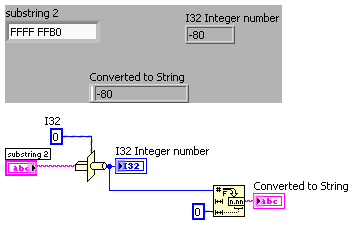Our online shopping is experiencing intermittent service disruptions.
Support teams are actively working on the resolution.
Our online shopping is experiencing intermittent service disruptions.
Support teams are actively working on the resolution.
06-14-2008 05:35 PM
06-14-2008 05:55 PM
06-15-2008 12:49 AM
06-15-2008 02:08 PM
Also have a look at these posts:
http://forums.ni.com/ni/board/message?board.id=170&message.id=267379
http://forums.ni.com/ni/board/message?board.id=170&message.id=17674
http://forums.ni.com/ni/board/message?board.id=170&message.id=293130
This one covers different aspects: 😉
http://forums.ni.com/ni/board/message?board.id=170&message.id=200401
RayR
06-16-2008 10:19 AM
06-16-2008 10:53 AM - edited 06-16-2008 10:54 AM

06-16-2008 11:09 AM - edited 06-16-2008 11:10 AM

06-16-2008 11:42 AM
06-16-2008 12:02 PM - edited 06-16-2008 12:02 PM
Your code only looks at 1 byte, and for that matter it looks at the second byte of what you get from the UDP Read. Yet you say you have a 2-byte code. I don't know what you mean by "I still didn't get the correct decimal number when used in this way though" since it's not clear what you're referring to.
@dglee359 wrote:Originally, the requirements was to use a 32-bit signed hex code, this was latter changed, when the 'designers' forgo the 32-bit and opted for just a 2-byte code. I still needed to convert with I32 data type to get the sign correct, as it seems. I still didn't get the correct decimal number when used in this way though, but I needed the decimal format in string type. Please see the attached as reference.

06-16-2008 12:09 PM
dglee359 wrote:
Embedded within the UDP data frame, I needed to monitor specific bytes (hex string) for the conversion. Question 1- the UDP data is in hex code, so the string function just to make the data more user friendly was to display in hex mode. Originally, the requirements was to use a 32-bit signed hex code, this was latter changed, when the 'designers' forgo the 32-bit and opted for just a 2-byte code. I still needed to convert with I32 data type to get the sign correct, as it seems. I still didn't get the correct decimal number when used in this way though, but I needed the decimal format in string type. Please see the attached as reference. It seems to work now, thanks again for the help.